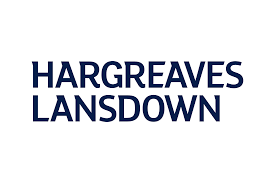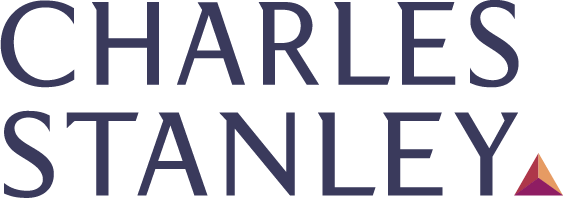For the vast majority of us, moving into retirement can often involve a significant reduction in monthly income. While there are ways and means of budgeting for a reduced income, for many people, the key to a comfortable retirement is managing their pension savings to maximise their income. There are various ways to access your retirement savings, often with tax incentives to consider.
Maximise your retirement fund with our panel of pension providers. Click on your chosen provider to get started!
Different types of pension fund
There are two types of pension funds: defined benefit (final salary pension) and defined contributions (money purchase pension).
Defined benefit pension scheme
As defined benefit schemes tend to be more expensive, many have been wound down, and new schemes tend to be defined contributions. The pension paid from a defined benefit scheme is based on membership of the scheme, duration of employment, and your salary on retirement. Traditionally, pension income will increase in line with inflation so that you retain your relative spending power.
Defined contribution pension scheme
A defined contribution pension scheme is one where your contributions and those from your employer are invested. Upon retirement, the funds are either used to purchase an annuity or enter a drawdown period. Personal pensions also come under the defined contribution pension scheme umbrella. The rate of income will depend on the prevailing market rates, and there is no connection to your employment or final salary.
When can you access your pension pot?
While it will depend upon the terms and conditions of the pension fund, usually, you should be able to access your pension fund from age 55. This will increase to 57 in 2028 as the government looks to introduce a range of changes to pension regulations. This compares favourably when looking at state pensions, where the state pension age is currently 66 for men and women. This figure will gradually rise from May 2026, creating two different private and state pension payment scenarios.
Managing your retirement income
There are several options to consider when you are eligible to access your retirement pot. They will differ depending on the type of pension fund/
Withdraw the maximum tax-free lump sum
Under current pension regulations, you can withdraw up to 25% of your pension fund assets when you reach retirement age. This element is free of any taxation, although you would pay tax on additional withdrawals over the 25% limit. While the remaining funds will be used for future income, the detail would depend on the type of pension scheme:
- Defined benefit scheme - residual income will be based on your final salary
- Defined contribution scheme - residual income will be based on market rates
While many people take advantage of the lump sum payment tax relief and delay further withdrawals, there are other options. For example, you may be able to invest your tax-free lump sum into a tax-efficient vehicle such as an ISA or a more general investment fund focused on the stock market. Your investment horizon and the degree of risk will dictate which options are worth considering. It is not advisable to proceed without taking financial advice.
Maximise your monthly income
If you decide not to use the tax-free lump sum facility, there will be more funds available for future monthly income. As above, the income level would depend upon the type of pension scheme. If you haven't fully utilised your tax-free lump sum allowance, any future payments up to the maximum lump-sum amount will be tax-free.
As you approach retirement, it is essential to take guidance from an independent financial adviser who will consider your financial scenario and all available options. In addition, using a pension calculator would give you a helpful insight into your potential income and breakdown.
Has pension drawdown replaced annuity purchase?
If you have a defined benefit pension scheme, your income is fixed when you decide to start receiving payments. With a defined contribution pension scheme, the situation is slightly different as there are two main options.
Purchase an annuity
In the past, defined contribution pension schemes were obliged to acquire an annuity. This occurred on the commencement of income from the scheme. The open market purchase of an annuity guarantees a level of income (often adjusted for inflation) for the rest of the member's life. However, as annuity rates fell, the government introduced a regulation change.
While those who prefer a guaranteed income level can still acquire annuities, and there are various types, this is not obligatory.
Pension income drawdown
One other option for those with a defined contribution pension scheme is to retain funds within the scheme and drawdown regularly or as and when required. If we assume your lump-sum tax-free allowance has been utilised. All withdrawals would be added to any additional income and taxed at the appropriate rate. Some people find it helpful to delay drawdown to maximise their investment returns. However, it is essential to take financial advice.
Working while receiving your pension
Many people assume that once you begin taking income from your pension fund, this is the end of your working life. Not necessarily!
Legally, there is no set retirement age in the UK, so you can work as long as you wish. Therefore, you may have multiple sources of income, such as a private pension income, plus your state pension and employment income. Whether or not you are working and receiving income from a personal pension scheme (or a state pension in later life) won't impact the payments made from your pension scheme. However, there may well be tax implications.
If you are working while receiving pension income, the two payments will be combined to create your annual income for tax purposes. It may well be that the combination will take you over the tax threshold or lead to an increase in income tax.
Is your pension protected?
Thankfully, while the UK has one of the most active financial services industries globally, there is also significant regulatory cover for both workplace and personal pension schemes. There are two central regulators to consider about pension schemes:
The Pension Regulator (TPR)
The TPR is in charge of regulating occupational pension schemes provided by employers for their employees. These can take the form of:
- Defined benefit schemes, otherwise known as final salary schemes
- Defined contribution schemes, otherwise known as money purchase schemes
- Hybrid schemes, a scheme structured specifically for particular employees (e.g. directors)
This regulatory cover takes in:
- Scheme trustees
- Employers
- Pension specialists
- Business advisers
The Financial Conduct Authority (FCA)
The all-encompassing FCA, the chief regulator for the UK financial services industry, is also involved in pension fund regulations. The FCA has regulatory responsibilities covering those who provide:
- Personal pensions
- Stakeholder personal pensions
- Self-invested personal pensions
- Workplace group personal pensions
When you consider that pension income will be vitally important in your later years, it is reassuring for retirees to see the level of regulatory protection available.
Pension compensation schemes
There are two specific compensation schemes which cover defined benefit pension schemes and defined contribution pension schemes:-
Pension Protection Fund (PPF)
The PPF will pay compensation to members of eligible defined benefit pension schemes on insolvency or fraudulent activity. The fund is generally used to top up where there are insufficient assets to cover workplace pension scheme liabilities.
Financial Services Compensation Scheme (FSCS)
The FSCS is a last resort scheme when a financial services firm cannot pay claims made against it. The scheme covers financial companies authorised by the Financial Conduct Authority (FCA) in the event of failure, fraud, etc. While covering pension claims, the scheme is also available for claims relating to:
- Banks and building societies
- Credit unions
- Mortgages
- Insurance
- Investments
- PPI
- Debt management
If you have been the victim of fraud or your financial adviser has gone out of business, costing you money, you should take the appropriate advice. All may not be lost, and you may be eligible for compensation, but you need to act quickly.
Pensions and Lifetime Savings Association
An additional trade body, known as the Pensions and Lifetime Savings Association, brings together those operating in the pensions industry to raise standards and share best practice.
Retirement planning is the key
The vast majority of people will be dependent on private and state pension income in their later years. Consequently, it is vital to plan your retirement finances well before your retirement day. This may involve reducing your investments' risk/reward ratio and switching into cash or nearer cash assets. Alternatively, you may retain funds within your pension scheme and take on a short, medium or long-term investment horizon.
Whatever you decide, you must take financial advice every step of the way and consider all pension options for your circumstances.
We spoke to Ceri Wheeldon from Fab After Fifty, who emphasised the importance of understanding your financial situation from the earliest opportunity. Ceri told Pension Times: "Be realistic about your current and future financial spending. Analyse how you spend your money today. How will your spending pattern change once you are retired? It is surprising how many of us don’t actually know what we spend each month.
"Break each item of expenditure down item by item. Do you really need it now? Will you need it in the future? Is it possible to make savings perhaps by changing the provider of services such as insurance? What additional needs will you need to plan for in the future?
"You need to fully understand your current spending before you can plan for the future."







